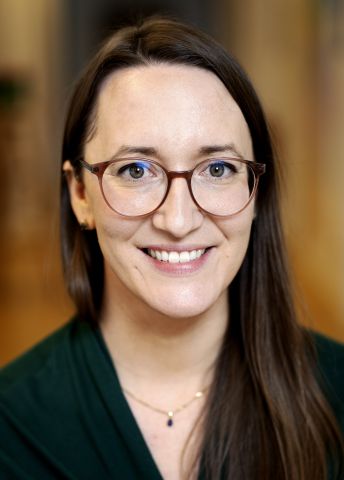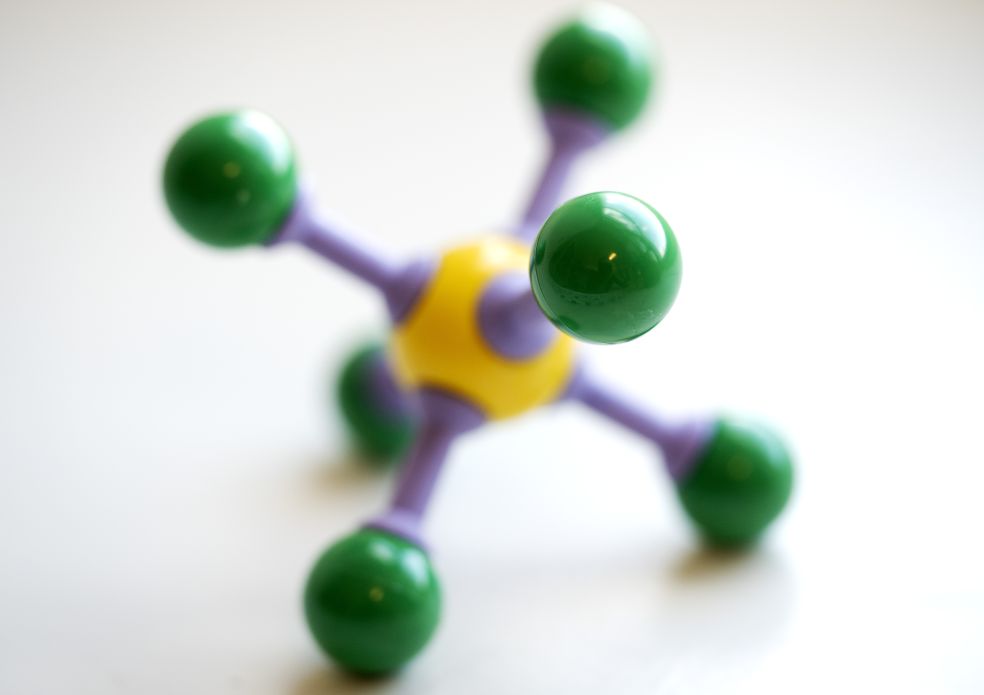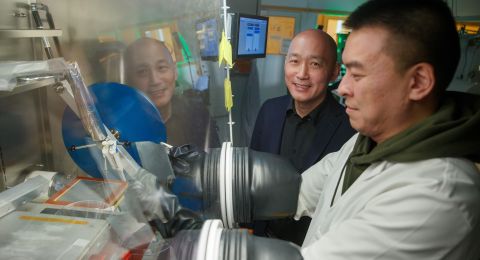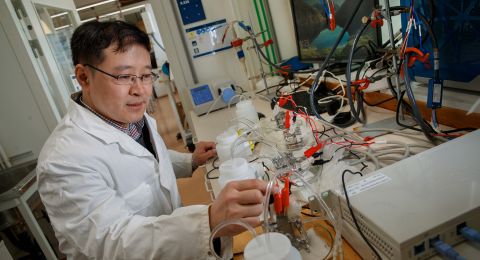Wallenberg Academy Fellow Julia Wiktor loves basic research, but always has her sights set on potential applications. She aims to reveal one of the more subtle interactions in solid-state physics: the intriguing interaction between high-energy electrons and their surroundings – known as polarons. Better knowledge of polarons could open many research doors and set the stage for efficient solar cell materials of the future.
Julia Wiktor
Associate Professor in Condensed Matter and Materials Theory
Wallenberg Academy Fellow 2023
Institution:
Chalmers University of Technology
Research field:
Condensed Matter and Materials Theory
Global energy consumption is rising rapidly, and with it the need for smart and efficient energy conversion methods. Wiktor, who is based at Chalmers University of Technology in Gothenburg, enjoys working in the energy field because it impacts the lives of so many people and plays such a key role in our society. As a Wallenberg Academy Fellow, she aims to better understand different materials, particularly semiconductors.
“I really enjoy fundamental physics and studying the atoms and electrons that make up our world. But I also want to create something that can be of tangible benefit to society. The knowledge we are developing is paving the way for important improvements in solar cell materials that are needed here and now. It feels good to clearly see the utility of research in the near term,” she says.
Polarons – a hindrance and an opportunity
When sunlight hits solar cells, the electrons in the cells absorb energy from the light. This energy sets them in motion, causing them to start flowing through the material. But in some cases, the electrons begin to interact with the atomic nuclei in their surroundings, forming what are known as polarons. Wiktor describes polarons as an interplay that traps the electrons and slows their movement through the material.
Although polarons have been explored for decades, their impact on different kinds of materials is still not completely understood. Wiktor and her research team are now addressing these gaps in our knowledge in a new project that will closely examine how every atom and electron in the polarons behaves.
“In polarons, the electrons slow down – something that is often considered bad in solar cell materials, where you want to extract energy quickly. But the electrons can survive longer in this form and can also trigger chemical reactions on the surface of the material. We want to fully understand the polarons and how they affect materials and their properties. That knowledge is needed so we can use polarons to design solar cell materials in the best possible way,” she says.
The solar cell materials of the future will have a better ability to absorb light and will have a more complex composition than current silicon-based materials. The hope is that the new materials currently being developed could lead to much more efficient, thinner, and more flexible solar cells – for example, ones that can cover surfaces such as portable electronics, backpacks, or even entire buildings.
Machine learning opens the door to faster discoveries
Wiktor’s research focuses specifically on polarons in the complex solar cell materials of the future. This requires better tools than current time-consuming and costly methods. So – using computer simulations of materials, together with machine learning – her team develops methods that allow rapid and efficient analyses.
The grant enables me to fully focus on research while also becoming part of a fantastic network.
“Studying polarons in realistic conditions takes time and is very difficult using conventional methods. It’s all about getting as close to reality as possible. We need to examine every atom in the material and in realistic situations. Our method – using supercomputers and combining atomistic simulations with machine learning – is essential to succeed,” she says.
The goal, as Wiktor puts it, is to gain full control over the polarons. Achieving that would be a major breakthrough – and not only for solar cell development.
“Hopefully, when new materials are developed we will be able to predict whether polarons are good or bad for the material’s purpose and understand how to make use of them in the best way. One immediate application is new solar cell technologies, but better knowledge of polarons could also be important in many other fields, such as neuromorphic computing or photocatalysis,” she says.
The appeal of variation and unpredictability
The world of mathematics and solving tricky problems has always fascinated Wiktor. She ultimately chose physics because she found it less idealized and more connected to real life.
“For me, physics was just messy and unpredictable enough,” she says.
Born in Poland, Wiktor studied and researched in France and Switzerland before taking up a position at Chalmers University of Technology in Gothenburg, where she feels very much at home.
“I really appreciate many of the values in Swedish society – for example, equality and the pursuit of independence and self-reliance that I notice in many areas, including academia. Some say Swedes are afraid of conflict, but I think it’s more that there’s less reason for conflicts to arise here than in some other places,” she says.
Wiktor sees her grant as a Wallenberg Academy Fellow as both an honor and an opportunity, opening doors to new research possibilities.
“The grant enables me to fully focus on research while also becoming part of a fantastic network,” she says.
Text Ulrika Ernström
Translation Maxwell Arding
Photo Johan Wingborg






